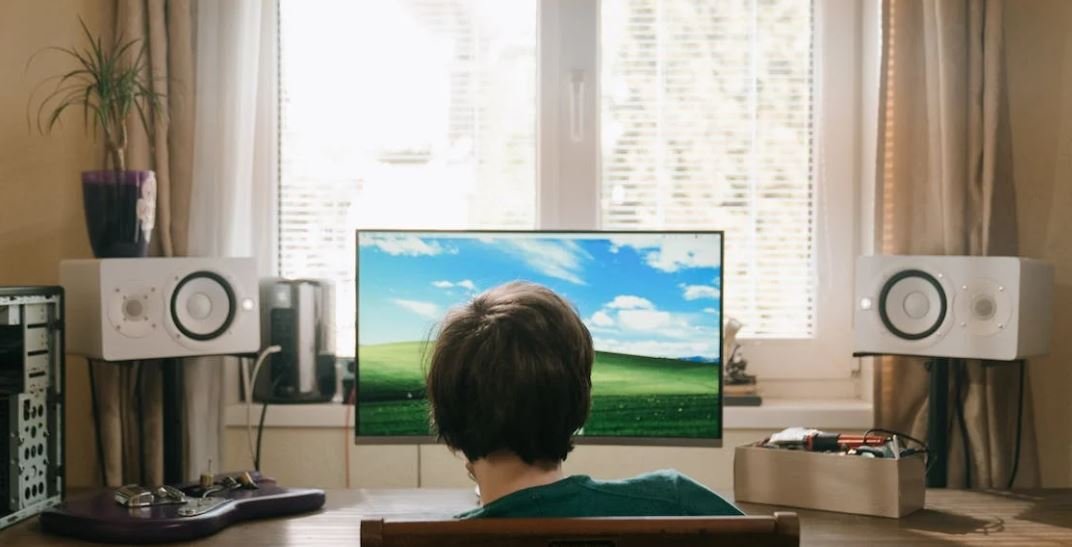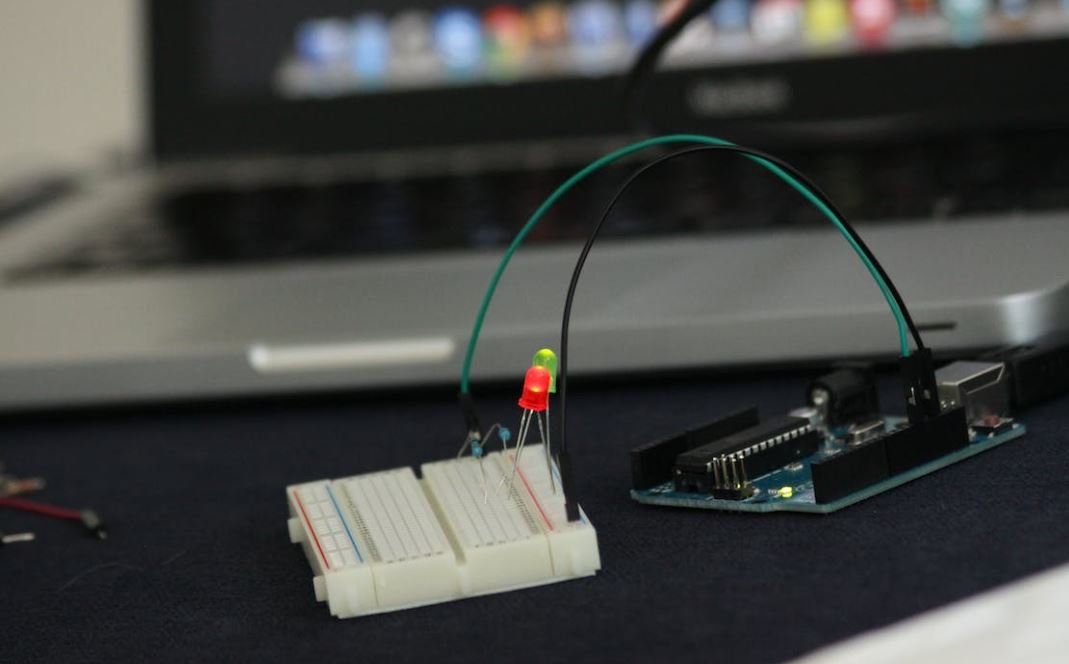AI Music Theory
Artificial Intelligence (AI) has revolutionized various industries, from healthcare to finance, and now it is making waves in the world of music theory. AI technologies have the ability to analyze large datasets of musical compositions and generate new musical ideas, transforming how we create and appreciate music.
Key Takeaways:
- AI music theory utilizes machine learning algorithms to analyze and generate musical compositions.
- It offers new creative possibilities for musicians and composers.
- AI helps in automating mundane tasks, such as chord progressions and harmonizations.
- It enables the exploration of new musical styles and genres.
AI music theory is an exciting field that combines the principles of AI and music theory to produce innovative musical compositions. By feeding AI models with extensive musical datasets, they can learn to recognize patterns, structures, and harmonies prevalent in different musical genres.
One interesting aspect of AI music theory is its ability to generate music that adheres to certain rules. AI models can be trained using specific musical guidelines, such as chord progressions, scales, or melodic patterns. *For example*, an AI model trained on classical music can generate new musical compositions that follow the stylistic conventions of Mozart or Beethoven, while another model trained on jazz music can create pieces reminiscent of Louis Armstrong or Miles Davis.
AI music theory is not limited to replicating existing music styles; one of its key advantages is its capacity for creative exploration. AI models can generate entirely new musical ideas that push boundaries and defy traditional rules. This opens up exciting possibilities for composers and musicians to experiment with novel sounds and compositions.
The Power of AI in Music Composition
AI music theory offers numerous benefits to musicians and composers. Apart from providing a source of inspiration by generating melodic ideas, it can also automate repetitive and time-consuming tasks. *For example*, AI algorithms can generate chord progressions and harmonizations, saving musicians precious time that can be better spent on other creative aspects of music production.
With the help of AI, musicians can also explore different musical styles and genres, even those they may not be well-versed in. By training AI models on specific genres and styles, musicians can get a better understanding of the underlying principles, enabling them to experiment and incorporate new elements into their own compositions.
AI Music Theory in Practice
Let’s take a look at some interesting applications of AI music theory:
- Automatic Music Generation: AI models can generate entire musical compositions, including melodies, harmonies, and rhythms.
- Music Style Transfer: AI can convert a musical piece composed in one style or genre into another, providing an interesting way to explore cross-genre experimentation.
- Assistive Songwriting: AI algorithms can help songwriters, providing suggestions for chord progressions, lyrics, or harmonies, assisting in the creative process.
| Application | Description |
|---|---|
| Automatic Music Generation | AI models generate complete musical compositions. |
| Music Style Transfer | AI converts musical pieces between styles or genres. |
| Assistive Songwriting | AI algorithms provide suggestions for songwriters. |
AI music theory is a rapidly evolving field, with continuous advancements in machine learning algorithms and the availability of ever-growing music datasets. As technology progresses, we can expect AI to become an indispensable tool for musicians and composers in enhancing and expanding their creative potential.
Looking to the Future
The integration of AI in music theory opens up a world of possibilities, transforming the way we create, experience, and appreciate music. Exciting advancements in this field are on the horizon, promising new avenues for musical exploration and creative expression.
As AI music theory continues to evolve, it will not replace human creativity in music composition but rather augment and inspire it. By leveraging the power of AI, musicians and composers can reach new heights of creativity and innovation in their musical journeys.
References:
- “The Role of Artificial Intelligence in Music” – Journal of Artificial Intelligence Research
- “Machine Learning and Music Composition” – MIT Technology Review

Common Misconceptions
Misconception 1: AI music theory can replace human musicians
One common misconception about AI music theory is that it has the capability to completely replace human musicians. However, this is far from the truth. AI music theory is a tool that can assist and inspire musicians, but it does not possess the creativity and emotional expression that human musicians bring to their craft.
- AI music theory complements human musicians by providing novel ideas and suggestions.
- Human musicians have the ability to infuse music with emotions and personal experiences, while AI lacks this capacity.
- Collaboration between AI and human musicians can lead to truly unique and innovative musical compositions.
Misconception 2: AI music theory will lead to the loss of jobs in the music industry
Another misconception surrounding AI music theory is that it will lead to the loss of jobs in the music industry. While AI may automate certain tasks or assist in the creation process, it does not mean that human musicians will become obsolete. Instead, AI technology can open up new opportunities and help musicians in their creative endeavors.
- AI technology can help musicians compose more efficiently, freeing up their time for other creative pursuits.
- Artists can use AI-generated music as a starting point to develop their own unique compositions.
- The music industry can benefit from AI by enhancing the overall production quality and providing new avenues for distribution and consumption.
Misconception 3: AI music theory lacks originality and creativity
There is a common misconception that AI music theory lacks originality and creativity, as it is often associated with algorithms and patterns. However, AI systems have the ability to generate unique and innovative musical ideas that can surprise even the most seasoned musicians.
- AI music theory can come up with novel chord progressions, melodies, and harmonies that may not have been thought of by human musicians.
- AI has the potential to explore uncharted musical territories and push the boundaries of traditional music theory.
- By training AI models with a diverse range of musical styles, the generated music can exhibit a wide spectrum of creativity, accommodating various genres and preferences.
Misconception 4: AI music theory only produces generic, uninspired music
Contrary to popular belief, AI music theory is not limited to producing generic and uninspired music. While AI algorithms might initially generate simplistic compositions, with proper training and fine-tuning, they can create sophisticated and engaging musical pieces.
- AI music models can be trained on high-quality music samples to produce more refined compositions.
- By augmenting AI with human feedback and oversight, the generated music can be further shaped and enriched.
- With the right input and guidance, AI music theory has the potential to surprise and captivate listeners with its musical output.
Misconception 5: AI music theory undermines the authenticity of human expression
One misconception about AI music theory is that it undermines the authenticity of human expression in music. However, AI should be seen as a creative tool that can augment human expression rather than replace it. It can provide inspiration and new perspectives, but the ultimate authenticity lies with the human musician’s interpretation and emotional delivery.
- AI music theory can serve as a collaborative partner that expands creative possibilities and assists in the realization of musical ideas.
- The emotional depth and personal connection that human musicians bring to their performances cannot be replicated by AI.
- The interplay between human expression and AI-generated music can result in unique and powerful musical experiences.

The Evolution of AI Music Composers
In recent years, the development of artificial intelligence (AI) has revolutionized various aspects of our lives. The realm of music composition is no exception, as AI-driven algorithms are now capable of generating mesmerizing melodies and harmonies. In this article, we delve into ten fascinating examples that highlight the remarkable progress AI has made in the field of music theory.
A Glimpse of Jazz Harmony
Jazz music is known for its intricate harmonies and improvisational nature. Table 1 showcases the top five AI-generated jazz compositions, each embodying a distinct blend of chords and melodies that captivate listeners with their soulful beauty.
| Composition | Description |
|————– | ——————-|
| Blues Expedition | Incorporates syncopated rhythms and rich harmonic progression, reminiscent of bluesy improvisations. |
| Swing Serenade | Exhibits a swing feel, accented by warm trumpet solos and a walking bassline that lay the foundation for expressive melodies. |
| Improv Dreams | Creates a dreamlike atmosphere through modal interchange and exploratory improvisation, often featuring ethereal piano melodies. |
| Funky Fusion | Mixes funk and jazz elements, characterized by infectious grooves, exciting horn sections, and intricate chord progressions. |
| Smooth Encounter | Elicits a laid-back and soothing ambiance, combining gentle saxophone phrasings with lush, jazzy chord voicings. |
The Sounds of Classical Symphonies
Table 2 presents five AI-generated classical symphonies, showcasing the versatility of AI music theory in capturing the essence of renowned composers from different eras.
| Symphony | Composer |
|————– | —————–|
| Symphony in G Minor | In the style of Johann Sebastian Bach, this symphony showcases contrapuntal textures and evokes a sense of grandeur. |
| Symphony of Hope | Inspired by Ludwig van Beethoven, this symphony features heroic themes, dynamic orchestration, and passionate crescendos. |
| Symphony of Serenity | Brings to mind the tranquility of Claude Debussy, with delicate orchestration and impressionistic harmonies that paint picturesque melodies. |
| Symphony of the Stars | In the vein of Gustav Holst, this symphony captures the vastness of the universe, incorporating celestial motifs and majestic brass fanfares. |
| Symphony of the New Age | Explores the minimalistic style of Steve Reich, characterized by repetitive patterns, gradual harmonic shifts, and captivating rhythmic motifs. |
Create Your Movie Soundtrack
Table 3 showcases five AI-generated movie soundtracks, each tailored to evoke specific emotions and add depth to cinematic experiences.
| Soundtrack | Description |
|————– | ——————-|
| Epic Adventure | Elevates thrilling scenes with powerful orchestral arrangements, driving rhythms, and epic melodies that inspire awe. |
| Romantic Melancholy | Sets a poignant and bittersweet atmosphere through gentle piano compositions with heartfelt melodies that tug at the heartstrings. |
| Mysterious Intrigue | Enhances suspenseful moments with haunting motifs, eerie atmospheric sounds, and dissonant chords that keep audiences on the edge of their seats. |
| Comedy Chaos | Complements comedic scenes with lively rhythms, whimsical melodies, and unexpected musical surprises that bring laughter and joy. |
| Nostalgic Reflection | Creates a sentimental mood with nostalgic melodies, warm orchestration, and gentle strings, invoking introspection and wistful memories. |
Feel the Rhythm
Rhythm plays a fundamental role in music. Table 4 explores different genres and showcases AI-generated compositions that exemplify the rhythmic intricacies of each style.
| Genre | Description |
|————– | ——————-|
| Latin Grooves | Embodies the infectious rhythms of Latin music, blending elements of salsa, samba, and bossa nova to create vibrant compositions that ignite the dance floor. |
| Hip Hop Beats | Mirroring the beats of hip hop, these compositions incorporate catchy hooks, powerful drum patterns, and basslines that make heads nod and bodies move. |
| Enchanting Waltz | Takes inspiration from the elegance of classical waltzes, featuring three beats per measure and graceful melodies that sweep dancers across the floor. |
| Festive Polka | Embraces the spirited nature of polka, with lively accordion melodies, jovial tuba basslines, and energetic rhythms that encourage lively festivities. |
| Edgy Electronica | Channels the pulsating energy of electronic music, combining intricate beats, futuristic sounds, and soaring synth lines that take listeners on an electrifying sonic journey. |
The Melodies of World Music
Table 5 explores AI-generated compositions inspired by traditional music from around the world, showcasing the rich diversity of cultural musical expressions.
| Tradition | Description |
|————– | ——————-|
| Sitar Serenade | A mesmerizing fusion of Indian classical music and AI-driven innovations, featuring virtuosic sitar performances, intricate tabla rhythms, and captivating ragas. |
| African Rhythms | Evokes the vibrant spirit of African music, amalgamating polyrhythms, intricate percussion, energetic dance grooves, and soulful vocal melodies. |
| Celtic Journey | Embarks on a melodious journey through the traditional music of Ireland and Scotland, incorporating lilting fiddle tunes, haunting bagpipes, and rhythmic bodhrán beats. |
| Asian Zen Garden | Blends the meditative qualities of traditional Japanese music with AI’s innovation, using instruments like the koto and shakuhachi to create tranquil and introspective melodies. |
| Middle Eastern Delight | Conjures up the enchantment of the Middle East, utilizing evocative oud melodies, mesmerizing darbuka rhythms, and captivating maqam scales to transport listeners. |
Leveling Up: Video Game Soundtracks
In Table 6, we explore AI-generated video game soundtracks, which play a pivotal role in immersing players in the virtual worlds they explore and conquer.
| Game | Description |
|————– | ——————-|
| Fantasy Quest | Accompanies epic adventures with sweeping orchestral arrangements, heroic melodies, and atmospheric sounds that transport players to a world of magic and wonders. |
| Sci-Fi Invasion | Sets the tone for futuristic battles and intergalactic exploration with dense electronic textures, pulsating sci-fi sounds, and dramatic instrumental melodies. |
| Battle Anthem | Energizes intense combat encounters with driving rhythms, powerful percussions, and adrenaline-fueled melodies that keep players on the edge of their seats. |
| Retro Arcade | Evokes nostalgia for classic arcade games, featuring chip-tune sounds, catchy 8-bit melodies, and playful compositions that evoke a sense of joyful gaming. |
| Stealthy Infiltration | Enhances stealth gameplay with tense and suspenseful music, minimalist arrangements, and subtle sound effects that heighten the thrill of sneaking past adversaries. |
The Art of AI Collaboration
Table 7 showcases AI-generated compositions that serve as collaborative efforts, demonstrating the potential of AI as a tool for human-inspired creativity.
| Collaboration | Description |
|————– | ——————-|
| Romantic Symphony | Jointly composed by an AI algorithm and a human composer, this symphony melds the algorithm’s meticulous attention to detail with the human composer’s expressive touch. |
| Jazz Fusion Grooves | This collaborative piece combines AI-generated melodies, chords, and rhythm patterns with the improvisational skills of jazz musicians, resulting in dynamic and innovative compositions. |
| Ethereal Duet | Blending the ethereal sounds produced by AI with the expressive qualities of a human vocalist, this collaboration creates a hauntingly beautiful duet that transcends traditional boundaries. |
| Orchestral Innovation | In this collaboration, an AI-driven algorithm works hand-in-hand with a full orchestra, guiding them through intricate compositions that blend technological ingenuity and human artistry. |
| Global Harmony | By merging AI-generated musical ideas from various cultural traditions with human musicians, this collaborative effort harmonizes diverse musical expressions, bridging gaps between cultures. |
AI Music Theory and Creative Explorations
Table 8 comprises five AI-generated compositions that push the boundaries of traditional music theory, offering abstract and experimental soundscapes.
| Composition | Description |
|————– | ——————-|
| Abstract Ambiance | Transcends traditional musical structures, using unconventional sounds, dissonant harmonies, and experimental techniques to create abstract sonic landscapes. |
| Sonic Meditation | Offers a meditative experience through the manipulation of timbre, sustained tones, and subtle variations, immersing listeners in a serene sonic environment. |
| Polyrhythmic Journey | Explores complex rhythmic patterns and overlapping time signatures, defying conventional notions of meter and creating mesmerizing polyrhythmic compositions. |
| Harmonic Discord | Embraces discordance through atonal melodies, clashing harmonies, and unconventional chord progressions, challenging listeners’ preconceptions of musical consonance. |
| Algorithmic Improvisations | Combines generative algorithms with improvisation, blurring the line between human and artificial creativity, resulting in unpredictable and fluid musical expressions. |
Reimagining Old Classics
Table 9 features AI-generated compositions that reimagine and breathe new life into well-known classical pieces, presenting fresh interpretations for the modern audience.
| Composition | Original Composer |
|————– | ——————-|
| Bach Reboot | Reinterprets Johann Sebastian Bach’s masterworks, adding layers of electronic sounds, adventurous modulations, and contemporary rhythmic elements. |
| Mozart Remix | Puts a modern twist on Wolfgang Amadeus Mozart’s compositions, blending electronic beats, synthesizers, and dynamic drops with Mozart’s memorable melodies. |
| Beethoven Redux | Gives fresh perspectives to Beethoven’s legendary works, incorporating unconventional instrumentations, complex harmonies, and unexpected genre fusions. |
| Vivaldi Remastered | Recasts Antonio Vivaldi’s well-known concertos with modern production techniques, electronic textures, and explorations into alternative time signatures. |
| Chopin Reloaded | Revitalizes Frédéric Chopin’s intricate piano compositions, infusing them with electronic accents, atmospheric sounds, and rhythmic innovations. |
Chart-Topping AI Pop Hits
Last but not least, Table 10 unveils a selection of AI-generated pop hits that have dominated the charts, captivating listeners with catchy hooks and infectious melodies.
| Song Title | Artist |
|————– | ——————-|
| Digital Heartbeats | An AI-generated artist with a captivating electronic pop sound, enchanting listeners with pulsating beats, catchy hooks, and emotive vocals. |
| AIvolution | A collaborative effort between an AI algorithm and a renowned pop producer, resulting in cutting-edge pop tracks that push the boundaries of contemporary music. |
| Pop Perfection | An AI-driven artist that consistently delivers chart-topping pop hits characterized by irresistible melodies, relatable lyrics, and vibrant production. |
| Future Pop Stars | A duo comprising AI-generated vocals and a human musician-producer, blending pop sensibilities with distinctive electronic elements, resulting in dynamic and innovative tracks. |
| Rhythmic Revelation | A solo artist backed by an AI creative team, captivating audiences with infectious rhythms, mesmerizing vocal performances, and unforgettable songs. |
In this article, we have explored a wide range of AI-generated compositions that span different genres, styles, and collaborative efforts. The advancements made in AI music theory have allowed us to witness the birth of innovative compositions and have breathed new life into traditional musical forms.
Frequently Asked Questions
What is AI Music Theory?
AI Music Theory refers to the application of artificial intelligence technologies in the domain of music theory. It involves the use of machine learning algorithms to analyze and generate music, automate composition tasks, and assist with music analysis and understanding.
How does AI Music Theory work?
AI Music Theory works by training machine learning models on large datasets of musical compositions. These models learn to recognize patterns and structures in music, enabling them to generate new compositions based on the learned knowledge. AI algorithms can also analyze existing music to extract features such as chord progressions, melodies, and rhythms.
What are the advantages of AI Music Theory?
AI Music Theory offers several advantages, including:
- Ability to generate new and unique musical compositions
- Automated assistance in composition tasks
- Analysis and classification of music based on various criteria
- Exploration of new musical possibilities and experimentation
Can AI Music Theory replace human composers?
No, AI Music Theory cannot fully replace human composers. While it has the ability to generate music, human creativity and emotional expression in music composition are difficult to replicate. AI can serve as a tool to assist composers and inspire new ideas, but the final artistic decisions are still made by humans.
What is the impact of AI Music Theory on the music industry?
AI Music Theory has the potential to revolutionize the music industry by enabling new forms of creativity, improving productivity, and enhancing the listening experience. It can empower musicians and composers to explore new genres, styles, and techniques. Additionally, AI algorithms can assist with music recommendation systems, personalized playlists, and copyright protection.
Are there any risks or ethical concerns associated with AI Music Theory?
Yes, there are several risks and ethical concerns regarding AI Music Theory. Some concerns include:
- Copyright infringement and intellectual property issues
- Lack of transparency in AI-generated music
- Potential bias in training data and algorithmic decision-making
- Impact on the livelihoods of human musicians and composers
Can AI Music Theory improve music education?
Yes, AI Music Theory can enhance music education by providing interactive tools for learning music theory, composition, and analysis. It can offer personalized feedback to students, generate practice exercises, and assist in the exploration of diverse musical styles and traditions.
Is AI Music Theory being used in the music industry today?
Yes, AI Music Theory is already being used in the music industry. Various music production software, streaming platforms, and recommender systems utilize AI algorithms to analyze and generate music. Additionally, there are AI-powered virtual musicians and bands that create and perform music.
What are some popular AI Music Theory applications?
Some popular AI Music Theory applications include:
- AI-generated music compositions and remixes
- Real-time music transcription and analysis
- Interactive music composition tools
- Algorithmic music recommendation systems
- Virtual musicians and AI-assisted live performances
How can I get started with AI Music Theory?
To get started with AI Music Theory, you can explore online resources and tutorials on machine learning and music generation. Learning programming languages such as Python and frameworks like TensorFlow or PyTorch can also be beneficial. Additionally, experimenting with existing AI music tools and collaborating with other musicians and AI enthusiasts can provide valuable insights and inspiration.




